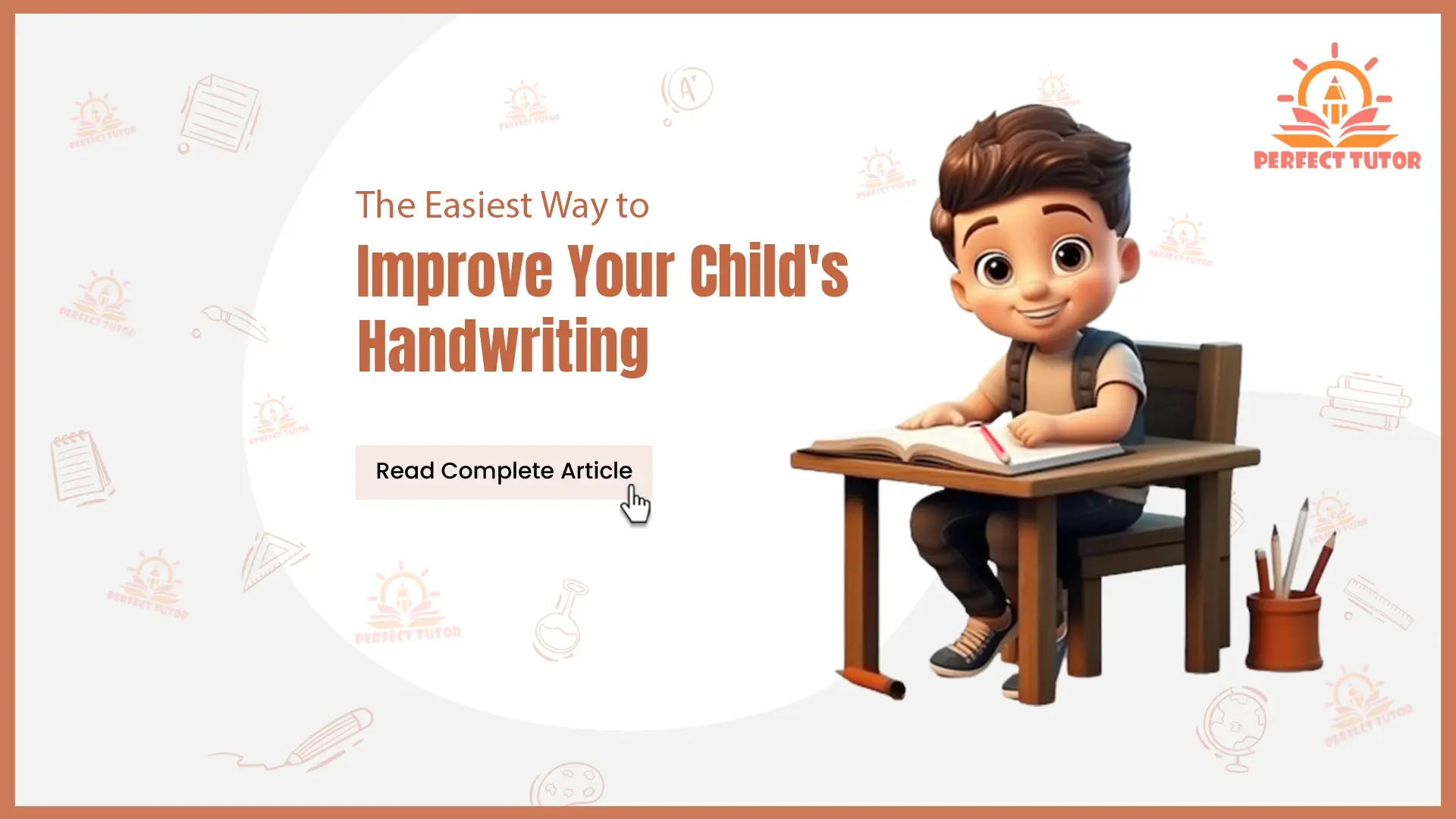The Easiest Way to Improve Your Childs Handwriting
In this article, we discuss the simplest way to improve your childs handwriting as it is an important developmental task and activity for your children. Through handwriting, they are able to express themselves in an attractive manner. People can also understand how their studies are going from their handwriting.
Whether you are a parent, home tutor, school teacher, therapist, or assisting with classroom activities, improving your child’s handwriting, legibility, pencil grip, and solving problem areas is extremely important.
We wanted to share some ways to improve kids' handwriting and I have collected here all the posts I have written on this topic to improve your kid's handwriting.
Why is Good Handwriting Important?
Before we discuss improvement tips, let's understand why good handwriting matters. Beyond beauty, clear and legible handwriting:
Boosts Academic Performance: Better handwriting helps teachers understand and grade assignments more easily, leading to increased academic performance.
Builds Confidence: Children feel happy and proud when their handwriting looks neat and organized.
Enhances Communication: Clear writing helps others read and understand your writing more easily.
Related:- Tips for How to Improve English Writing Skills
Practical Tips to Improve Handwriting
Improving your child's handwriting can make school work easier and boost their confidence. It's a journey that helps them write better and feel more confident in their studies. Here are ten simple tips to help you improve your child's handwriting easily:
Select the Right Paper and Pen
Choosing the right tool can really help your child write better. Choose paper that is smooth and has lines to indicate how big the letters should be and how much space should be between them. It is best to use a pencil that is comfortable to hold or a gel pen that moves easily on the paper.
Help Children Achieve the Proper Grip and Posture
Proper grip and posture are basic to good handwriting:
Grip: Teach your child how to hold the pencil with the thumb and index finger, and use their middle finger for stability. This way of holding the pencil helps them control it better and reduces stress.
Posture: Make sure your child sits upright at the table and his feet are flat on the floor. The writing surface should be at the height of his elbows so that he is comfortable.
Hold Their Hand
For younger children or those struggling with grip, gently guide their hand to demonstrate proper letter formation. This tactile approach helps them understand how letters should look and feel.
Pre-Writing Skills for Toddlers and Preschoolers
Engage toddlers and preschoolers in activities that help prepare their hands and fingers for writing. For example, let them draw shapes, draw lines, and play with Play-Doh. These fun activities prepare them for better writing later.
Form a Writing Routine
Create a regular schedule for practicing writing. Start with short sessions and gradually increase the time as your child gets better. Doing this regularly helps their muscles remember how to write and makes their handwriting smoother.
Create a Fun Writing Environment
Make handwriting practice fun by using coloured markers, scented pencils or alphabet stamps to make writing sessions fun. Let your child decorate his writing area with stickers or themed stationery to make it his own.
Related:- Top 7 Tips for Motivational activities for students
Identifying Underlying Issues
Keep an eye on your child's handwriting to avoid problems like misformed letters or uneven spacing. Correcting these problems in time can prevent frustration and improve their writing skills overall.
Work on Motor Skills
Engage your child in activities that strengthen the muscles in his hands and fingers, such as squeezing a stress ball, stringing beads, or playing with building blocks. Having strong motor skills helps him write more precisely and with better control.
Make Friends with Letters
Learn each letter gradually by focusing on one or two letters at a time. Practice forming each letter correctly, paying attention to its shape and the space between letters. You can use worksheets or a fun app to help you remember what each letter looks like and how to write it correctly.
Practice Regularly
Encourage your child to practice regularly to develop confidence and skills. Let them write for different reasons, such as writing letters to family, making lists or keeping a diary. The more they write, the better their handwriting will become.
Conclusion
Improving your child's handwriting doesn't have to be that difficult. By following these simple tips into their daily routine, you can help them develop neat and legible handwriting skills. Remember, Improving your child's handwriting requires time and support. By offering patience and encouragement, you can help them feel confident in their writing skills. With your help, they will soon learn to write neatly and clearly.
Use these strategies consistently and watch your child's handwriting skills improve. Helping your child write better is a rewarding journey that makes learning easier and makes a strong foundation for future success in school.



 +91 8700847275
+91 8700847275
 +1 8009616567
+1 8009616567